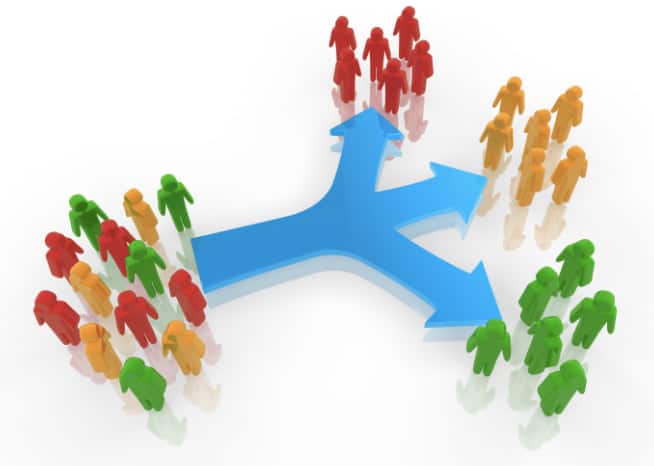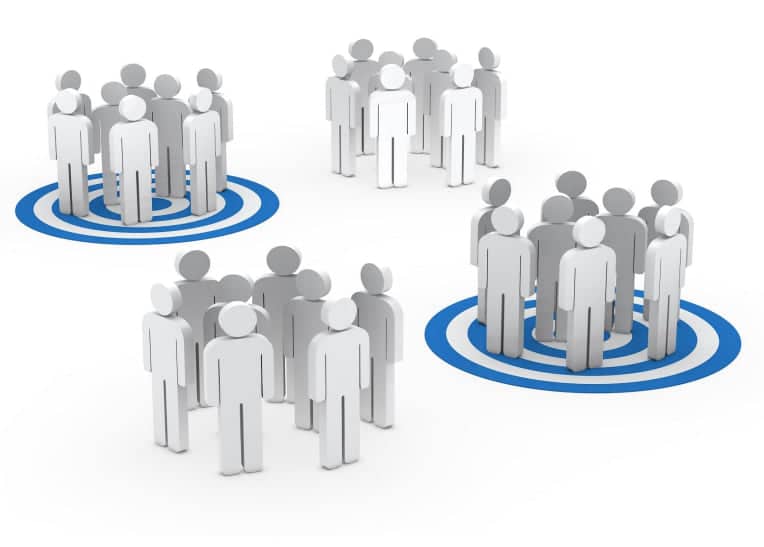Whether you’re a wedding event planner or someone who organizes corporate events for large corporations, you always have two objectives:
- Making the client happy
- Making attendees happy
If the first task isn’t rocket science, because it requires satisfying only one person or company, the second may be quite the challenge. Attendees tend to have very different visions of event experiences. Someone finds gamification super-cool, but there are always those who’ll say, “Come on, we’ve not come to play games here!”.
Event attendee segmentation is your lifesaver here. By segmenting your target audiences, you can match the priorities and needs of your client with the attendees’ profiles. This way you ensure that everyone will like everything at the event. Okay, that’s an overstatement, but still very close to the truth!

Why you need to segment your event attendees?
Segmenting event attendees means making the right attendees show up at the right event. In other words, you have to use segmentation in case you want to create those win-win event experiences.
Start your segmentation strategy by exploring the goals of your client. What’s the event really about? Is it better if the majority of attendees will be alumnis or first-time visitors? Should you follow the customers or partners? Maybe both?
After you have all the answers in your event planning pocket, start looking for segmentation tools. The basic ways for studying the target audiences is capturing the key data from registration forms with customizable fields, post-event surveys, etc.
5 Ways to segment your event audience
There are several ways to capture your event universe diversities and commonalities. Here are 5 indicators based on which you can segment potential event attendees.
#1. Geography

You can align your event marketing strategy with targeting the “hot spots” on the map. The segmentation of event attendees based on geography means looking for which locations the majority of your event guests are coming.
Let’s say if you’re planning to organize an event in Berlin, enable the function of tracking ticket buyers’ locations. The understanding of your target regions will tell you whether it’s worth spreading the event marketing budget across the whole country or rather align it only with the locations that offer the highest registration inflows.
Geography-based event promotion can give you a great win for the budget. Apart from this, as soon as you find out where your event guests stem from, study the locations carefully and think how you can showcase the information gained at the event. Maybe 60% of event attendees are coming from Singapore? Then you might choose something from the local cuisine to treat them and pay your respects.
#2. Demographics

As event planners often note, the events they organize may be particularly popular with specific demographic groups. This means that segmenting your audience based on gender, age or marital status is a great way of looking at the target attendees.
To be as precise as possible, event marketers create target personas for their campaigns based on demographic features. By coming up with the typical buyer profiles, you can make your event marketing purposeful and ensure that you don’t waste event the budget on attracting the wrong audience.
#3. Firmographics

A very important segmentation aspect for events that are directed towards B2B industries. To put it simply, firmographics focuses on certain business directions or professions. Healthcare-targeted events will, obviously, have to attract medical institutions or groups of people working in the sector. Design contest organizers will be looking for designers or design studios, etc.
Even if an event embraces a broad focus, there should never be “one-size-fits-all” targeting in B2B event planning. If it’s too complicated to figure out which industry sectors should be addressed, segment the audience based on revenues, profits, company size or any other relevant benefits.
#4. Psychographics

Ok, this one can be interesting. Segmentation of attendees considering psychographics means analyzing interests and preferences of people to find out which internal motivations they might have.
Don’t get scared. You don’t need a degree in psychology to do that. Select among the existing frameworks or establish your own metrics and get it started!
The typical examples of psychographics-based segmentation are offered by the UK VALS framework, which splits target personasinton 6 groups: activators, traditionalists, achievers, seekers, pragmatics, and constraints.
Do any of them match the profiles of people you want to attract? Great! If not, hop on your creativity wave and develop the right custom psychographic groups for your event matching.
#5. Behavior
Our actions define us. They also define event attendees. Tracking the behavior of registrants is probably one of the most reliable event marketing tools if you want to sharpen your targeting strategy.
It goes like this: you observe – you note – you act. Create several lists of registrants based on their event registration decisions. For instance, those who went for early birds in your previous campaigns go into one group, those who’ve done a great job with referrals – into the second, etc. You decide what’s more interesting for the current event promotion. By knowing how your attendees behaved last time, you can decide how to approach them in future.
Benefits of list segmentation
Utilizing listing in your segmentation strategy will give you a great benefit in terms of sorting the right target groups for your EDM campaigns and other engagement activities.
Here’re two good reasons why you shouldn’t underestimate list segmentation:
- Increase your open and click-through rates. Every self-respecting event planner knows that tailored content that appeals to a potential attendee is never left without attention. By sorting your potential attendees with the help of lists, it’s easy to provide the right people with the right content and incentives.
- Minimize unsubscribing. Irrelevant emails make people click on that dreaded button of frustration, a.k.a. “unsubscribe”. Using targeted marketing, you make sure that every person on the list gets something of interest.
Conclusion
Event attendees segmenting is just what you need to put an edge on your event marketing strategy. When you know who your target audience is – you already have what it takes to make it satisfied. Once you find out how to make people register, ensure that they will enjoy the process. GEVME Registration can take it from here.








